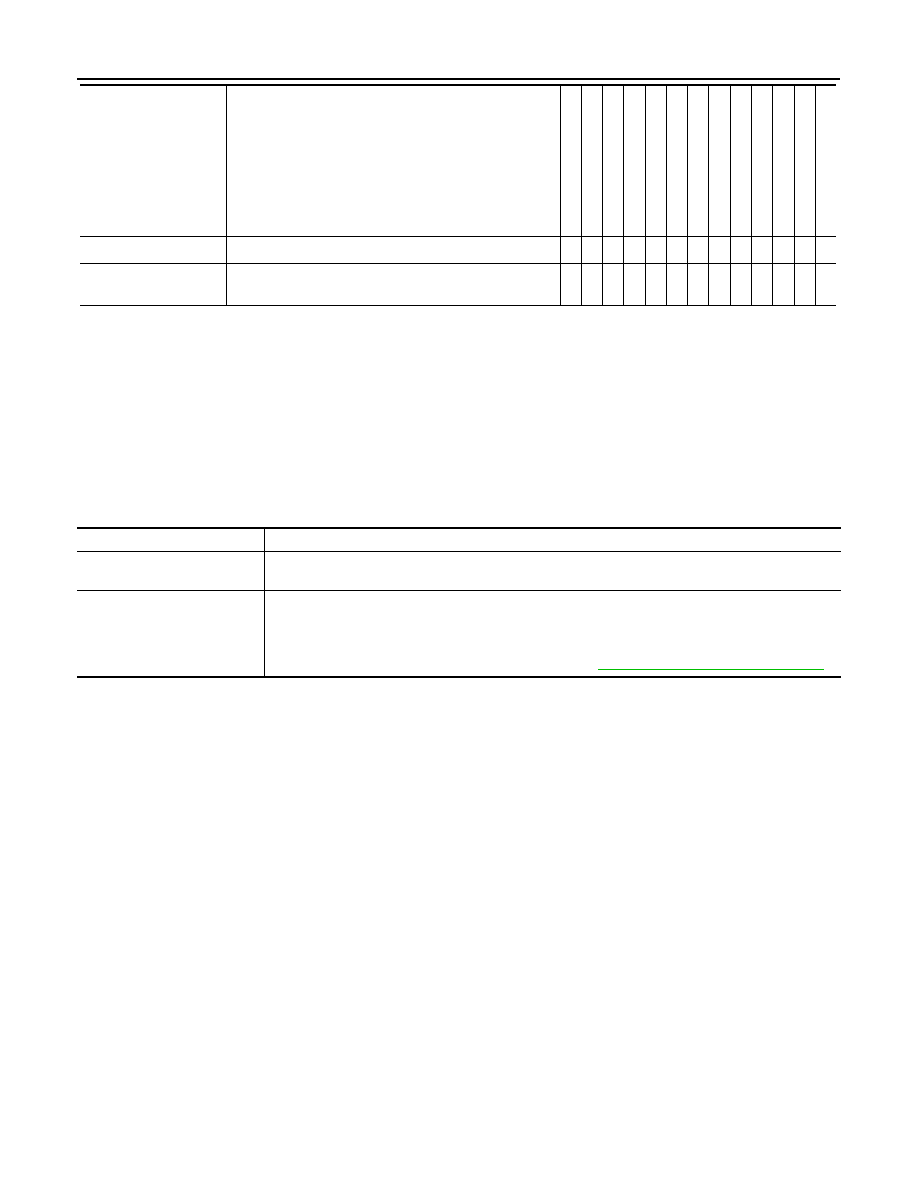Nissan Pathfinder (2009 year). Manual - part 440

GI-58
< BASIC INSPECTION >
CONSULT-III CHECKING SYSTEM
x : Applicable
*1: With Intelligent Key
*2:With automatic drive positioner
*3: With rearview camera
*4: With 4-wheel drive
*5: With security card installed
CONSULT-III Data Link Connector (DLC) Circuit
INFOID:0000000003938081
INSPECTION PROCEDURE
If the CONSULT-III cannot diagnose the system properly, check the following items.
NOTE:
The CAN and DDL2 circuits from DLC pins 6, 7 and 14 may be connected to more than one system. A short in
any circuit connected to a control unit in one system may affect CONSULT-III access to other systems.
PIN read
*5
This mode shows the BCM-specific 5-digit code.
-
-
-
-
-
x
-
-
-
-
-
-
-
Control unit
initialization
*5
All registered ignition key IDs in NATS components can be
initialized and new IDs can be registered.
-
-
-
-
-
x
-
-
-
-
-
-
-
Diagnostic test mode
Function
ENGINE
TRANSMISS
ION
ABS
AIR B
A
G
IPDM E/R
BC
M
MET
E
R/M
&
A
INT
E
LL
IGENT KE
Y
*1
AUT
O
DRIV
E
POS.
*2
REAR
VIEW
CAME
R
A
*3
MUL
T
I A
V
ALL MODE A
W
D/4WD
*4
HV
AC
Symptom
Check item
CONSULT-III cannot access
any system.
• CONSULT-III DLC power supply circuit (Terminal 8) and ground circuit (Terminal 4)
CONSULT-III cannot access in-
dividual system. (Other sys-
tems can be accessed.)
• Power supply and ground circuit for the control unit of the system (For detailed circuit, refer to wiring
diagram for each system.)
• Open or short circuit between the system and CONSULT-III DLC (For detailed circuit, refer to wiring
diagram for each system.)
• Open or short circuit CAN communication line. Refer to
LAN-14, "Trouble Diagnosis Flow Chart"
.
2009 Pathfinder